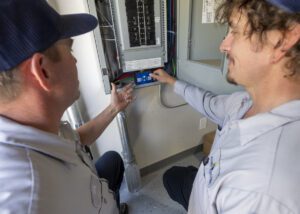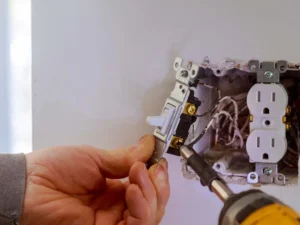Troubleshooting Electrical Issues in Older Homes: Understanding the Unique Challenges
Telling the tale of electrical quirks in yesteryear homes is much like flipping through your grandmother’s cherished family photo album — each flick of the page reveals a piece of history and, more often than not, a smile-inducing bout of nostalgia. But beneath the charm lies a network of currents and wires that, with time, reveal their age in ways that are not quite as endearing.
If your abode is a proud relic from a bygone era, you might have encountered a few electrical hiccups that seem to be the home’s less-welcome heritage. However, understanding these issues is more than just a lesson in the past; it’s your key to the future safety and functionality of your living space.
1. Outdated wiring systems
The heart of any home is its electrical system and older homes usually beat to the rhythm of outdated electrical wiring, such as knob and tube or aluminum wiring. These systems, once the epitome of modernity, have now become the flag bearers of potential hazards.
The Resilience of History
While knob and tube wiring, a method that predates the 1940s, may astound with its resilience, it often fails to meet the demands of modern appliances. The same can be said for aluminum wiring, a go-to during the 1960s and early 1970s due to a copper shortage, which can pose a fire risk due to its chemical composition’s incompatibility with many electrical connectors commonly used today.
2. Overloaded Circuits
Toggling between appliances and devices can be akin to a high-stakes game of electrical Tetris. The need for power in this digital age often outstrips the capacity of older electrical systems to deliver it.
A Delicate Balancing Act
Older homes typically have fewer outlets per room, causing homeowners to snake extension cords through various nooks and crannies. This creates a spiderweb of demand that very swiftly tips the delicate balance of an older electrical system into an overloaded circuit, leading to the potential for overheated wires and, you guessed it, fires.
3. Diminishing Insulation
The insulation surrounding your electrical wires acts as their comfort blanket, protecting them from the elements and safeguarding you against potential shocks and fire hazards.
Decay Over Time
The antecedents of insulation seldom boast the longevity of their modern counterparts. Over time, the rubber or cloth coverings that sheath the wires disintegrate, exposing the conductive material beneath. This leaves the wires vulnerable to moisture and physical wear, and you vulnerable to electrical shock.
4. Lack of Grounding
Grounding, or the concept of having an alternate pathway for electrical currents, is a modern electrical safety staple. It’s no surprise, then, that older homes that lack this feature are more susceptible to power surges and appliance damage.
The Need for a Facelift
Two-prong outlets were the norm for a significant chunk of the 20th century. However, as the demand for electrical safety grew, three-prong outlets — or grounded outlets — came into fashion. If your older home is still outfitted with the two-prong variety, it’s like giving your expensive electronics a ticket to the roulette table of power surges.
5. Thirsty for Tech
The electrical systems in older homes were simply not designed to keep up with today’s tech-heavy lifestyles. The digital revolution has transformed the modest power needs of yesterday’s household into a full-fledged energy consumption marathon.
Playing Catch-Up
With today’s gadgetry, from dishwashers to 4K televisions, constantly seeking out electrical love, older homes often find themselves playing electrical catch-up. The solution is not always straightforward, as rewiring an entire home is a substantial undertaking. Still, it’s an investment in safety and convenience that today’s electronics demand.
Wrapping Up
The electrical issues in older homes are not a condemnation of the homes themselves but rather a testament to their resilience. They have weathered the storms of technological evolution and have the quirks to prove it. But it’s crucial to recognize that these quirks can compromise the safety of you and your home, so staying vigilant and addressing these issues is paramount.
Navigating the electrical complexities of an older home is no small task, but it’s a challenge that, when met with the right tools and knowledge, can enhance both your dwelling and your peace of mind. Whether it’s through cautious navigation of appliance usage, seeking out professional inspection, or considering a system update, each step taken towards solving these electrical enigmas is a step taken towards a safer sanctuary.

